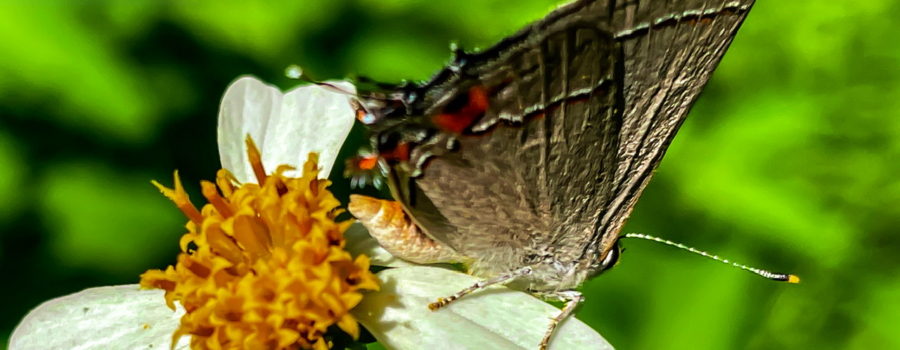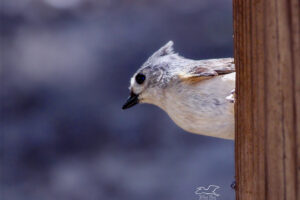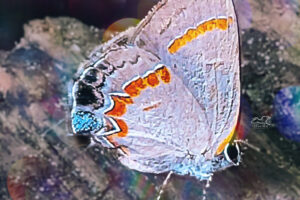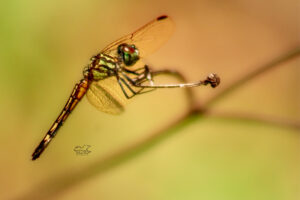The Beautiful Grey Hairstreak is a Flexible Generalist

One of the most common butterflies in the Americas is the grey hairstreak, a type of gossamer-winged butterfly. This butterfly has an incredible range that goes from southern Canada, through pretty much all of the continental United States, all of Central America and into northwestern South America. It can be found at elevations ranging from sea level to over nine thousand feet! There are very few species of any kind of life that has this kind of range, other than, of course, human beings. So the next question in my mind is why does this butterfly have such an incredible range? The answer to that question, in my opinion, is the the incredible flexibility of this little insect.

The grey hairstreak is a generalist in several of it’s behaviors that are responsible for it’s ability to live in such a huge range. First, it is not very particular about its habitat. These butterflies will live just about anywhere that there is sunshine and flowers! They can be found in tropical forests, meadows, pastures, crop fields, temperate woods, mountainous areas, along roadsides, along waterways, in disturbed, weedy areas, in urban parks and yards, in gardens, and in rural areas. They are also very flexible in what they will eat. They will feed on almost any flower that contains nectar. They do seem to prefer mallows and legumes, and in Central and South America they are fond of passion fruit flowers (here, too!). Even though those seem to be favorites, they also frequent flowers from over twenty different families including clovers, corn, hogwort, azalea, raspberry and dewberry, lupine, and okra. The caterpillars are also generalists when it comes to their diets. As newly hatched caterpillars they usually feed on the flowers and fruits of these plants, but as they get older, they may also include leaves and occasionally even stems.

A third reason that these butterflies do so well throughout their vast range is their ability to produce multiple generations per year. They tend to have a long flying season ranging from February through November in warmer areas and May through November in cooler climates. Adults live between three to four weeks, which is considerably longer than many butterfly species (some only live a few days). This longer lifespan, of course, leads to a larger reproductive capacity for each individual. All of these factors have lead to the immense success of this particular butterfly. No matter where you live in the Americas, you are probably familiar with these pretty butterflies. If you’re not, just keep you eyes open. The odds are good that they live near you!






Recent Comments